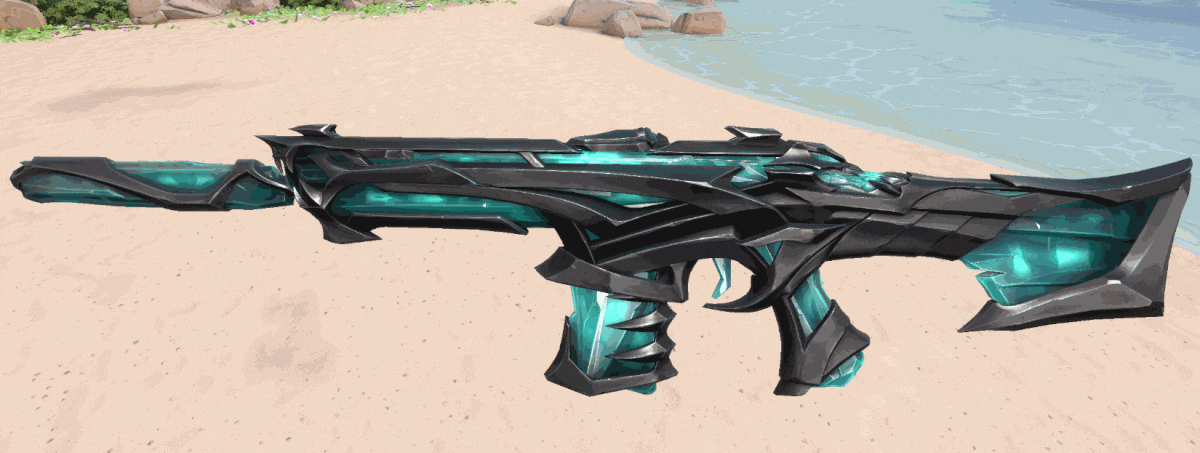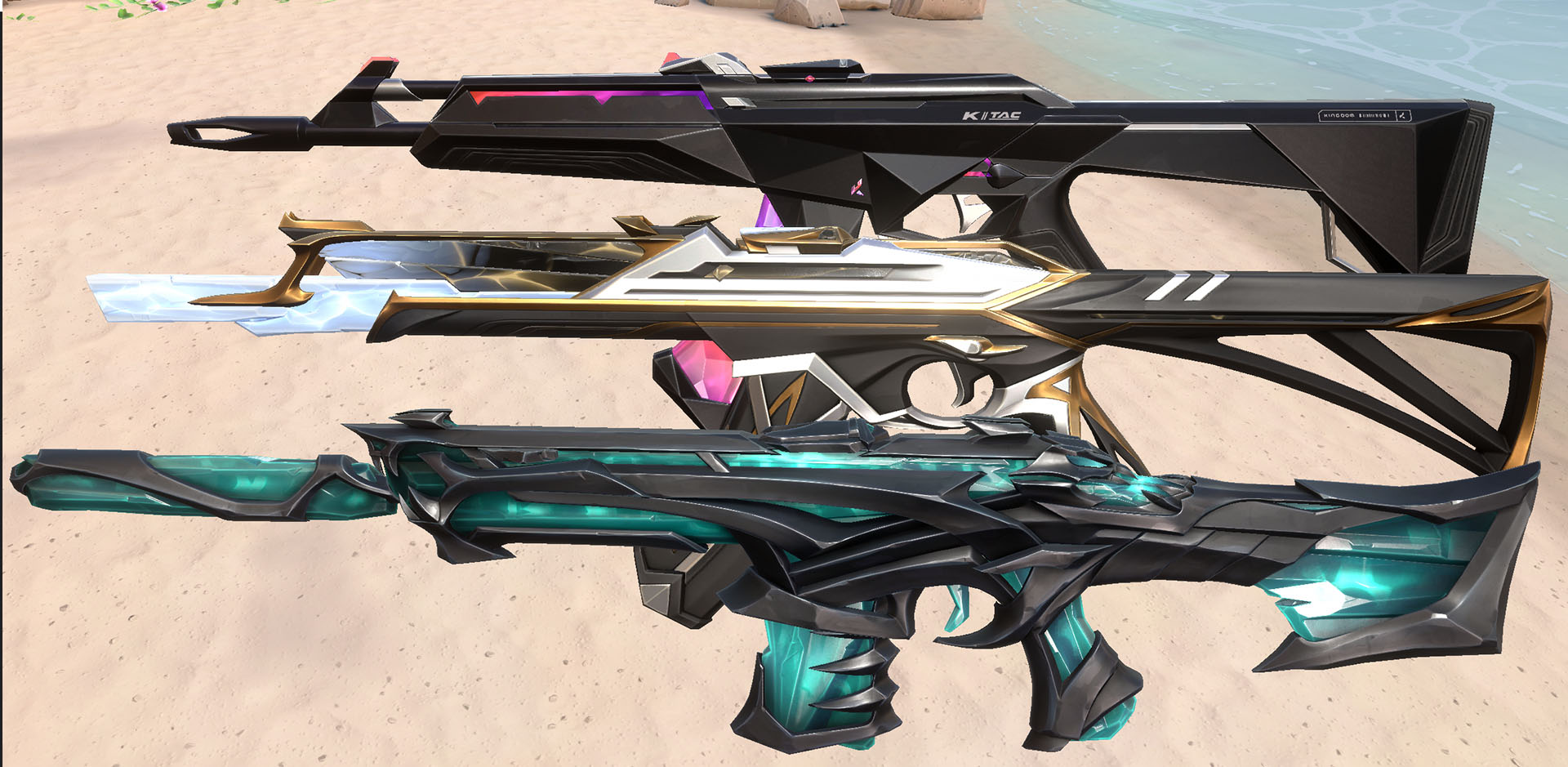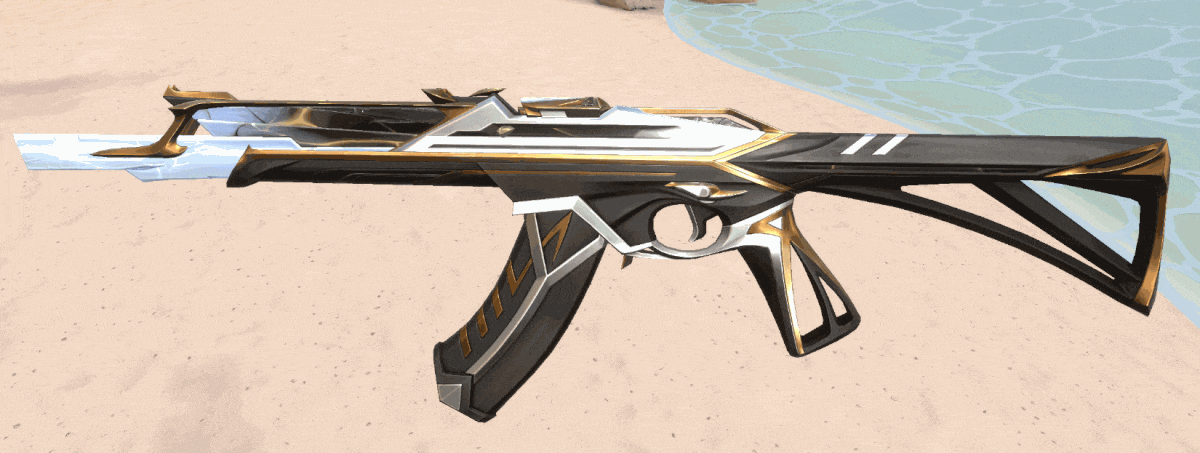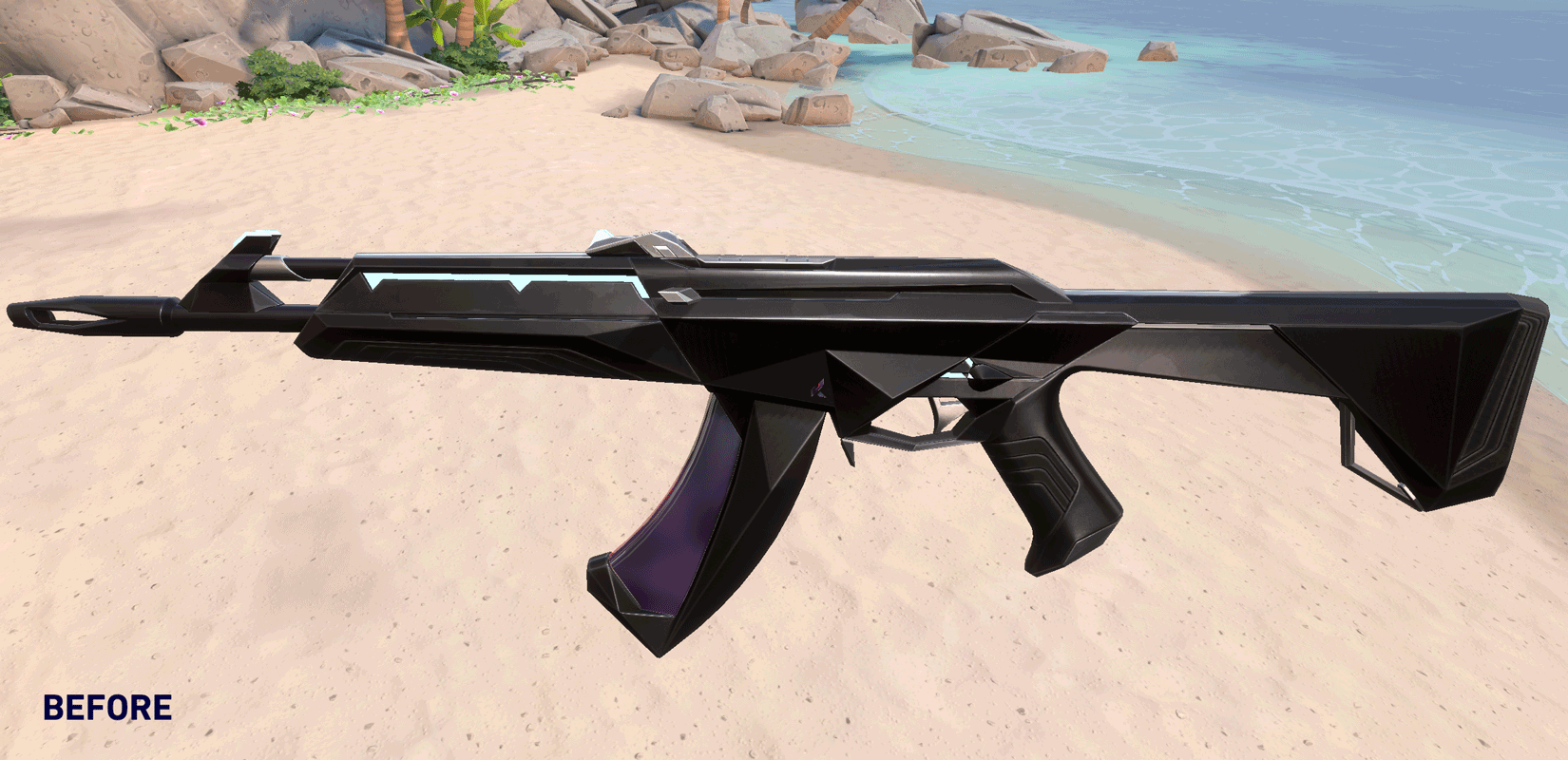Hi again everyone! I’m Chris Stone, a weapons artist on the VALORANT Premium Content team. I last wrote about how our team collaborated to build the tech behind the Spline skins. Now that both League of Legends crossover skins are in-game, the team wanted to share how we got Ruination and Sentinels set off the ground, as well as how we used this as an opportunity to develop new “materials” for VALORANT skins.
OUR NEW MATERIALS
Sentinels of Light is Riot's big summer event, bringing the “Ruined” and "Sentinel" thematics to each of our games. Although VALORANT doesn’t occupy the same space as League of Legends, it was a fun opportunity to bring the “Black Mist” that is taking over Runeterra to our weapons.
Bringing this theme to life offered an interesting challenge: How do we visualize the Black Mist within the crystal while preserving both the competitive integrity of the weapons and creating something that fits within our tight performance constraints?
I knew we had to create something that the League team (and you) would be excited for while also satisfying VALORANT players (like myself) who don't know the first thing about League.
Right away I worked with our team’s FX artist to learn about the signature shapes that make up the Black Mist effect. I was even able to utilize one of his textures for the custom material I was making, which in the end, saved time and made the gun skin feel more cohesive!
Materials here refers to a custom shader built inside of Unreal Engine Material Graph. Through an interesting combination of some light math and 2D painted textures, an artist is able to create some unique special materials, like the Black Mist effect. We experiment with creating these custom materials when we feel that they will add a nice visual bump to our skins.
After studying the concept to understand how I wanted to translate it to the final 3D in-game model, I decided that having the Black Mist effect flowing inside of the crystal material would be a great thematic tie-in to the larger Ruination set, and would hopefully be really hype to look at too.
SO FRESH, SO CLEAN
OK, going to get technical here for a sec.
One challenge when creating any new special material for our weapon skins is authoring it in a clean way so that other artists can take and use it for other gun skins in the line, or building on top of it for an entirely new skin. Pro tip: leaving comments in Unreal Engine material graphs is incredibly helpful when someone else has to take a look at your work—I highly encourage every artist to use them!
After I finished prototyping out the material, I spoke with the FX artist working on the FX smoke trails on the skin to see if he had any thoughts before I called it final. We worked together to make it so he could match the intensity of my custom material with the intensity of his visual FX during the equip and reload animation—two big beats when players can really admire the overall skin.
Speaking of keeping work clean, this effort helped us quickly prototype and make the “Relic Stone” on the Sentinels of Light skin!
SENTINELS OF LIGHT
For the Sentinels of Light skins, our lead artist on the project was looking for a way to represent the Relic Stones (these hold the power to keep the Black Mist at bay). The desire was to build the powerful relic intol the SoL skins so that they could hypothetically fight off the “Ruination” running wild in the League universe. The other goal was to make it feel cracked, yet beautiful and powerful —think Forsaken vibes.
Let’s focus on the Vandal for now.
I managed to turn some extra free time into quickly prototyping a material based on the tech I created for the Ruination skins. My first pass was on the rough side, but it was enough to get the rest of the team excited about the concept.
The lead artist on SoL skins took my prototype and added enough awesome new features and textures to make it something that really stood out while still representing the Relic Stone and it’s lore. One of the big visual features added is the ability for the crystal to change states when the gun is fired and reloaded.
This was combined with the great work our outsource managers were already doing with the weapons. They worked directly with our external partner to help guide the other SoL skins from the 2D concept all the way to the final 3D models that you see in game. This tight collaboration between artists and outsource managers really helps to create a large volume of complex gun skins like this set!
SPOT THE TECH IN K/TAC
As a Senior Artist on VALORANT, I try to have a holistic view on the quality of weapon skins and search for opportunities where we can level them up, so to speak.
The K/TAC skins are an example of extending the life of new weapon skin tech such as the one in Ruination. While our outsource team was working with our external vendor on the K/TAC skin line, I felt that the materials we were using could be improved to deliver a super clean Battlepass skin for players.
The 2D concept for the K/TAC skins included an interesting faceted (like a gem!) material in the magazines. To try to mimic that, I developed a custom Normal Map, which is a special type of texture that can bend light that hits the gun in unique directions. The final Normal Map pulled that inspiration from the concept and the final gun model. Finally, I created an additional texture that could flow like water through that custom Normal Map to create a magical and oily effect to serve as an energy source.
When looking at real world brands, and then looking at Kingdom and the lore we’ve established in the VALORANT universe, I knew we needed to add some branding on the weapons to really tie these skins together. For that, I worked with our art director on Premium Content to create the brand for the K/TAC skins to add that extra finish polish.
FUTURE TECH
I hope this gives you all a bit of an insight into the less visible work we do behind the scenes to develop fresh and exciting new skins! As always, we carry other day-to-day responsibilities that take up time, but it’s always a great feeling when we can work on developing new tech like the type explained here to help level up VALORANT gun skins.




